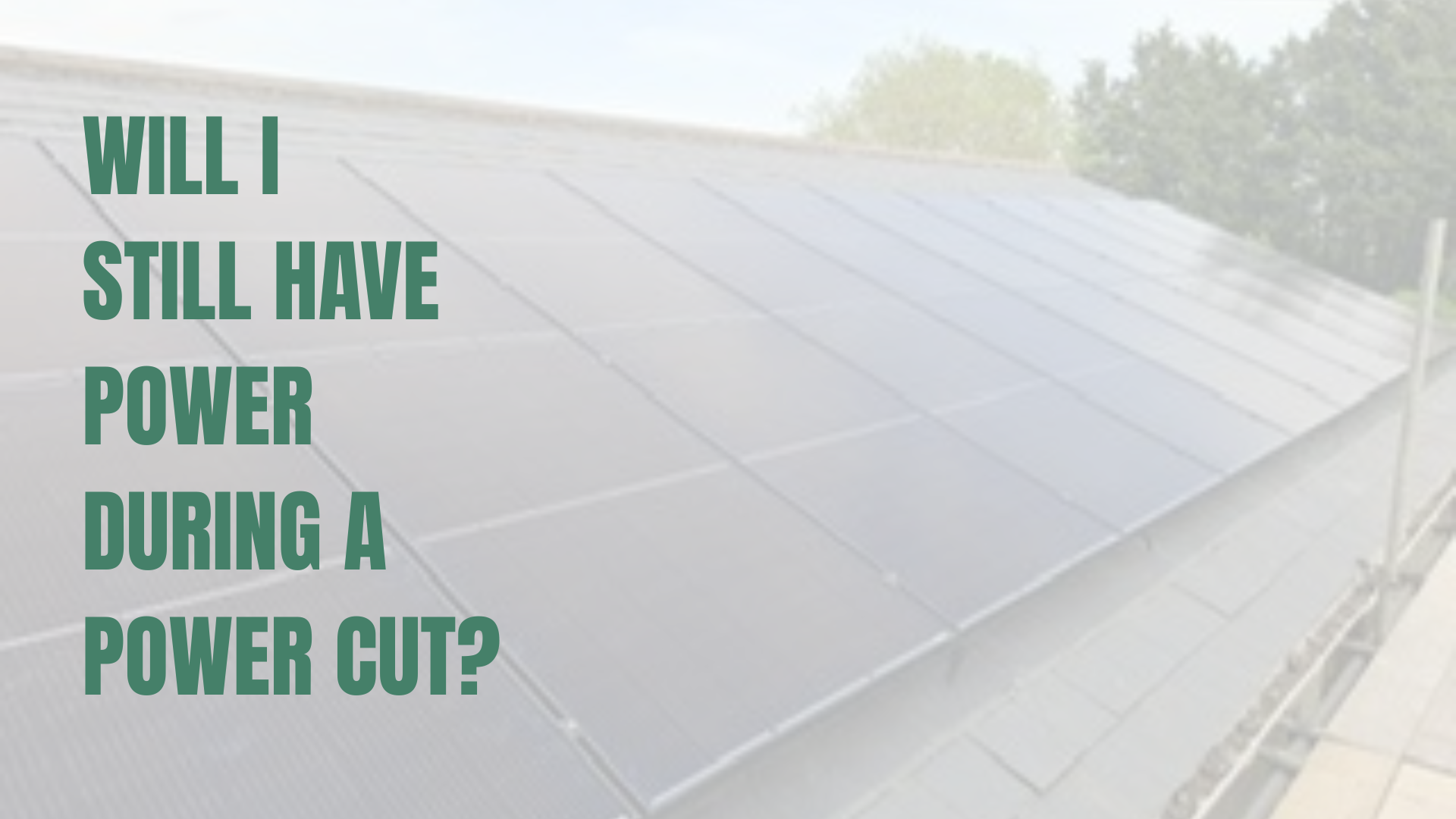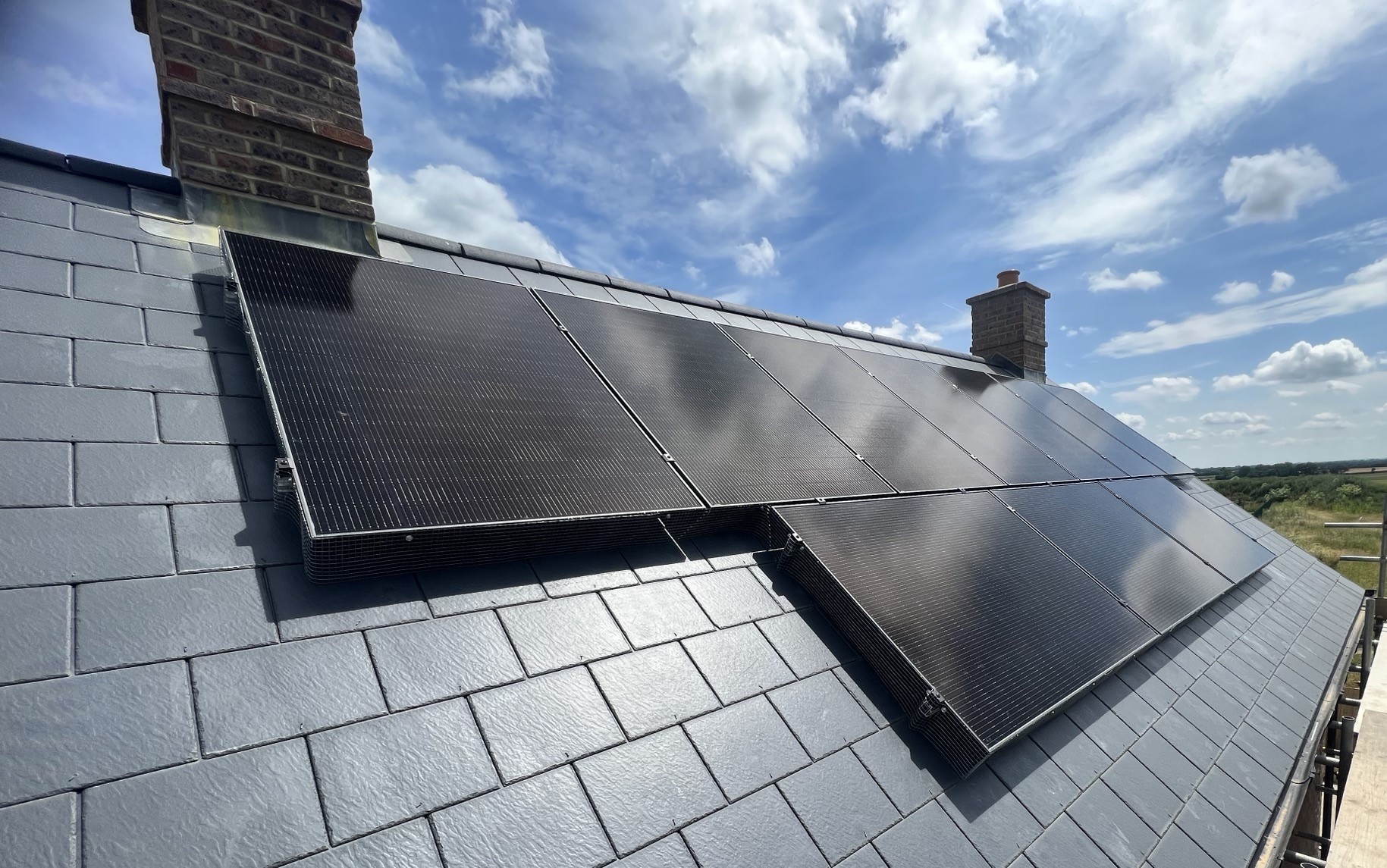The simple answer to this is no, but there are ways you can program your system to allow some power to be used during a power cut. When having a solar PV system installed you can have an Emergency Power Supply (EPS) installed alongside, allowing you to power just one socket, multiple circuits or your full home. This of course incurs additional costs and can be costly if you wish to have your full home powered in the event of a power failure.
Keep in mind, this incurs additional costs, especially if you wish to power your full home. It’s worth noting that the average UK home experiences less than one power cut per year, typically lasting just 38 minutes — and power cuts have reduced by 43% since 2011. For most households, installing EPS might not be worth the investment.
What is EPS and How Does it Work?
Most solar systems will automatically disconnect from the grid in the event of a power cut to ensure the safety of the engineers working to restore power. EPS for solar is a function installed to allow you to run your solar battery during a power cut. Firstly, you will need to have a solar battery installed that is enabled for EPS, not all solar batteries come with this function installed as standard, and those that do have EPS installed come with a much higher price tag. You will then need to have a new consumer unit installed, connected to a dedicated EPS socket, specific circuits or all circuits within your home. Depending on the level of EPS you opt for the relay switch that is installed will either be automatic or manual.
The Four Levels of EPS
Depending on which level of EPS you choose to have installed will determine what level of power you have and the cost. The higher the level, the more you will have running but the higher the cost of the installation.
- Level 1
Your solar installer will install a new socket exclusively for EPS use. This will give you enough power to charge a phone or keep a lamp running.
- Level 2
Your solar installer will connect an essential circuit or multiple circuits to a new consumer unit which after a short delay will use power directly from your battery to run. This is usually used to keep your lighting circuit and kitchen circuit running (so your fridge freezer continues to run).
- Level 3
Level 3 allows you to switch your whole home onto battery supply. This will be done manually so you will be aware when you are using battery supply and know to restrict electricity use.
- Level 4
After a short delay, your home will automatically switch to using your battery, this will continue for as long as your battery lasts.
- Level 5
Level 5 is the most expensive form of EPS, your battery will power your solar inverter allowing you to continue generating electricity from your solar panels to power your home and charge your battery.
Is EPS Worth It?
In most circumstances in the UK, having level 1 EPS installed is more than enough, especially since power cuts are rare and brief. If you live in rural areas or areas that have regular power cuts, it is worth discussing with your installer whether having EPS installed will be worth it.
When having EPS installed the additional costs you need to take into consideration include upgrading your existing wiring and consumer unit, having a new consumer unit installed specifically for EPS, updating your external earth cable and installing enough batteries to power your home. EPS installation must be planned in advance and discussed with your installer — some may not complete the required electrical upgrades, so coordination is essential.
EPS can provide valuable peace of mind during power outages, but it’s not a one-size-fits-all solution. The right level of backup power depends on your location, lifestyle, and budget. For many UK households, minimal EPS coverage is sufficient, while those in more remote or outage-prone areas may benefit from more advanced options.
Before making a decision, speak with SolarTherm UK to assess your needs and determine the most cost-effective level of EPS for your home. Proper planning, the right battery system, and compatible hardware are essential to ensuring your solar PV system continues to support you — even when the grid goes down.
Your home. Your energy. Your future.





